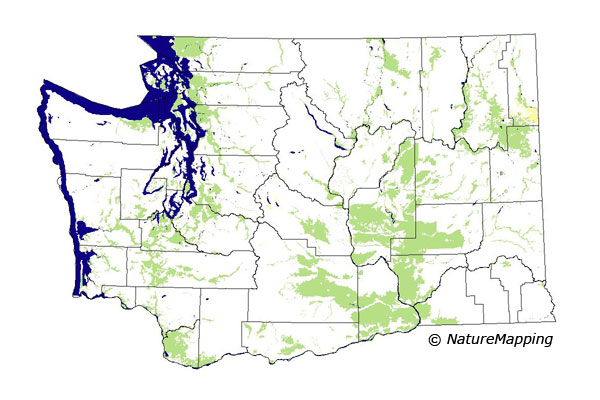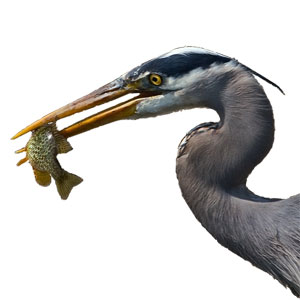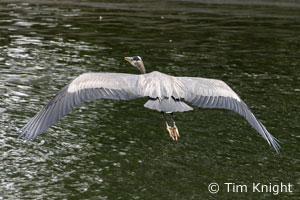
NatureMapping Animal Facts
Great Blue Heron
|
Great Blue Heron (Ardea herodias)
Calls:
The call of the Great Blue Heron is a deep, hoarse croak. 
Range / Habitat: In Washington, the Great Blue Heron is common in marshes, mud flats, and agricultural areas at low to mid elevations on both sides of the Cascade crest. They nest colonially in trees near water and then disperse to feeding areas. Along river valleys they may be found at fairly high elevations, for example, along the Skagit River near Ross Lake.
Great Blue Herons also occur at some mid-elevation lakes in Kittitas County, however, these birds may not be breeding. In eastern
Washington, the Great Blue Heron is generally found from the Ponderosa Pine zone and below in suitable habitat, but it is occasionally
found much higher.
Click the range map to learn more about the distribution of
Great Blue Herons in Washington.
Diet: Great Blue Herons feed on fish, amphibians, reptiles, invertebrates, small mammals, and even other birds. In Washington, much of their winter hunting is on land, with voles making up a major portion of their winter diet. (Seattle Audubon Society) Behavior: When foraging, they stand silently along the shore, waiting for prey to come by, then they stab the prey with a quick lunge of the bill. They will also stalk prey slowly and deliberately. Both parents regurgitate food to feed the young. The young birds can first fly at about 60 days old, but they continue to return to the nest and are fed by the adults for another few weeks. Pair bonds only last for the nesting season, and adults form new bonds each year.
Great Blue Herons typically breed in colonies containing a few to several hundred pairs. Nest building begins in February when a male chooses a nesting territory and actively displays to attract a female. The large nest is usually built high up in a tree. The male gathers sticks for the female who constructs a platform nest lined with small twigs, bark strips, and conifer needles. The female lays 2-6 pale blue eggs, then both parents incubate them for 25-29 days (4 weeks) until the young hatch. The parents bring food to young at the nest for two months before the young can fly and continue feeding the birds for a few weeks after fledging (leaving) the nest.
Did you know?

An adult Great Blue Heron near Portage Bay in Seattle. More information: BirdWeb: Great Blue Heron
All About Birds: Great Blue Heron
Citizen Science: Great Blue Heron |


